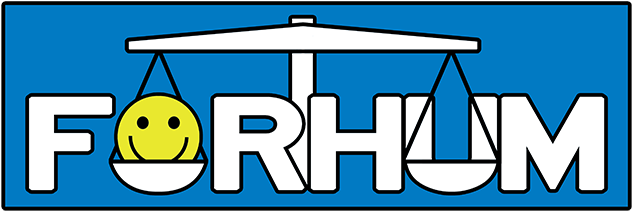
Mode of expression: Press cartoon strip
Publication: West Australian Newspapers Ltd
Region: Australasia (Australia)
Relevant dates: 6 September 1997 (publication), 6 February 2004 (final decision)
Outcome: Newspaper is acquitted; Bropho’s appeal dismissed.
Judicial body: Federal Court of Australia
Type of law: Judicial Review
Themes: Discrimination / Artistic Work / Satire
Context and Legal case
Bropho v. Human Rights Committee was an appeal against the dismissal of a judicial review (a review by the court to ensure that the judicial decision was correctly made). A judicial review focuses on the legal process and not on the merits of the decision.
The appeal was brought by Richard Bropho, an Aboriginal rights activist, on the grounds that the Human Rights and Equal Opportunity Commission had misapplied Australia’s Racial Discrimination Act when it reached its decision regarding the cartoon strip “Alas, Poor Yagan” published by Western Australian Newspapers Ltd in 1997.
Yagan was an Aboriginal Leader who had been murdered by British colonisers in 1833. His head was severed, smoked to preserve it and sent to England where it was displayed in a museum.
The 1997 cartoon ridiculed the behaviour of Nyungar Aboriginal Elders who had argued over the repatriation of Yagan’s head after it was recovered from a graveyard in Liverpool, England. Their arguments included which of them might have had the claim by descent to accompany the head back to Australia. Their disagreement went as far as litigation in the Supreme Court of Western Australia. The cartoon joked about the mixed ancestry of some of the people involved and depicted the Elders as wanting to take advantage of a free trip to England. It included one Elder using a sacred figure to threaten a child who questions the Elder’s rights, and depicted Yagan’s head in a cardboard box from which he says he would rather be in a pub in England.
Bropho argued that the cartoon was unlawful because section 18C of the Racial Discrimination Act 1975 prohibited an act, in this case the act of publishing a cartoon, if
- the act is reasonably likely, in all the circumstances, to offend, insult, humiliate or intimidate another person or a group of people; and
- the act is done because of the race, colour or national or ethnic origin of the other person or of some or all of the people in the group.
He further argued that the Commission had been incorrect in deciding that the cartoon was exempted under section 18D of the Act, which includes exemptions where the act was carried out “reasonably and in good faith” in the context of an artistic work. This appeal balances the prohibition of racial vilification with the protection of freedom of expression.
The appeal was dismissed on the grounds that there was no error of law in assessing that the cartoon was covered by the exemption as an artistic work. The appellate court rejected the original application for judicial review, arguing that the primary judge had correctly followed legal procedure.
Analysis
The title of the cartoon, “Alas, poor Yagan,” parodies a line from Shakespeare’s Hamlet, “Alas, poor Yorik,” where Hamlet discovers the skull of a court jester in a graveyard. The content of the cartoon is split into eight panels in which an adult Aboriginal, referred to as “Uncle Colbung,” reads from a book to an audience of three Aboriginal children. Kenneth Colbung was a well-known Aboriginal leader in the Perth area.
Indigenous witnesses appearing at the original hearing stated that they were distressed and concerned at the cartoon’s lack of respect for Aboriginal culture and history. It was argued that the cartoon breached 18C of the Racial Discrimination Act for the following reasons:
- The cartoon presented a demeaning portrayal of Yagan, an ancestor of the complainants.
- The cartoon contained references to the Wagyl, a religious figure.
- It treated the issue of death in a manner which causes offence.
- It provided intimate details of the ancestry of individuals and offended them.
- It identified individuals not ordinarily in the public arena and caused them public humiliation.
The appeal ultimately failed because the court ruled that the cartoonist’s freedom of expression outweighed the Nyungar people’s right to live free from vilification, even though it was agreed that “a reasonable Nyungar or Aboriginal person would have found the contents of the cartoon offensive, insulting, humiliating or intimidating. A reasonable person not necessarily of Nyoongar or Aboriginal descent would have found the cartoon offensive or insulting” (Bropho, at 35).
The cartoon’s panels implied that the Elders were not Aboriginal enough because they were of mixed ancestry, but the court acknowledged that this was sometimes because Aboriginal women had been raped. The cartoon also reinforced the misinformed and stereotypical view that Aboriginal people are alcoholics – with Yagan’s head expressing a wish to be in a pub – and that Aboriginal people take advantage of Government grants. The cartoon, by depicting the head in a cardboard box, also belittled the importance of its repatriation to the community.
The commissioner decided to interpret the exemptions in 18D broadly, concluding that West Australia Newspapers Ltd had acted in good faith. He justified this because other articles and editorials in the newspaper had dealt with the repatriation of Yagan’s head as an issue of national importance.
Sources and further reading:
Gelber, Katherine and McNamara, Luke. 2016. Anti-Vilification Laws and Public Racism in Australia: Mapping the Gaps between the Harms Occasioned and the Remedies Provided. UNSW Law Journal 39(2): 488–511.
